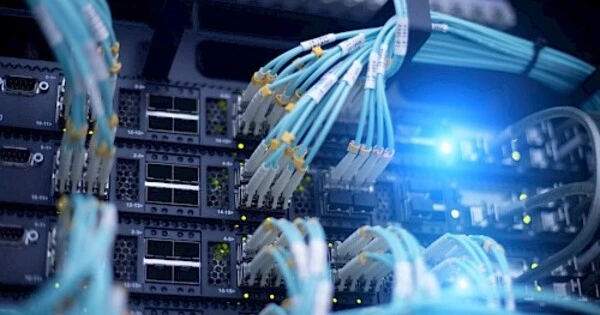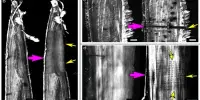Optical communication, also known as optical telecommunication, is long-distance communication that uses light to carry information. It can be done visually or with electronic devices. The earliest basic forms of optical communication date back several millennia, while the photophone, invented in 1880, was the first electrical device created to do so.
Data is typically encoded into light pulses in optical communication systems, which are then transmitted through optical fibers or through the air using lasers or light-emitting diodes (LEDs). The binary data is represented by light pulses as 0s and 1s, with the modulation technique determining the specific encoding scheme. It uses optical fibers to transport signals to their destinations. A modulator/demodulator, a transmitter/receiver, a light signal and a transparent channel are the building blocks of the optical communications system.
An optical communication system consists of a transmitter that encodes a message into an optical signal, a channel that transports the signal to its destination, and a receiver that reconstructs the message from the received optical signal. When no electronic equipment is used, the’receiver’ is a person who visually observes and interprets a signal, which can be simple or complex (for example, lights that use color codes or flash in a Morse code sequence).
Optical networking systems based on optical fiber, optical amplifiers, lasers, switches, routers, and other related technologies are used in modern communication. Lasers are used in free-space optical communication to transmit signals in space, whereas terrestrial forms are naturally limited by geography and weather. This article provides a basic overview of various types of optical communication.
Key components of an optical communication system include:
- Transmitters: These devices generate and modulate the light signals carrying the information. They typically consist of a light source, such as a laser diode, and control circuits to encode the data onto the light.
- Optical fibers: These are thin, flexible, transparent fibers made of glass or plastic that are used to transmit the light signals over long distances. They have high bandwidth and low loss, enabling the efficient transmission of data.
- Receivers: These devices receive and decode the light signals back into electrical signals that can be processed by computers or other electronic devices. Receivers typically consist of a photodetector, which converts the light pulses into electrical signals, and electronic circuits for signal processing and decoding.
Optical communication offers several advantages over traditional electrical communication methods, including:
- High bandwidth: Optical fibers have a much higher bandwidth compared to copper wires, allowing for the transmission of large amounts of data over long distances.
- Low loss: Optical fibers have low signal loss, enabling data to be transmitted over longer distances without the need for frequent signal regeneration.
- Immunity to electromagnetic interference: Optical communication is not affected by electromagnetic interference, making it more reliable in environments with high levels of electrical noise.
- Security: Optical signals are difficult to tap or intercept, providing a higher level of security compared to electrical signals.
Optical communication is widely used in a variety of applications due to these advantages, including long-distance telecommunications networks, internet infrastructure, cable television, data centers, and high-speed interconnects for supercomputers and servers.















